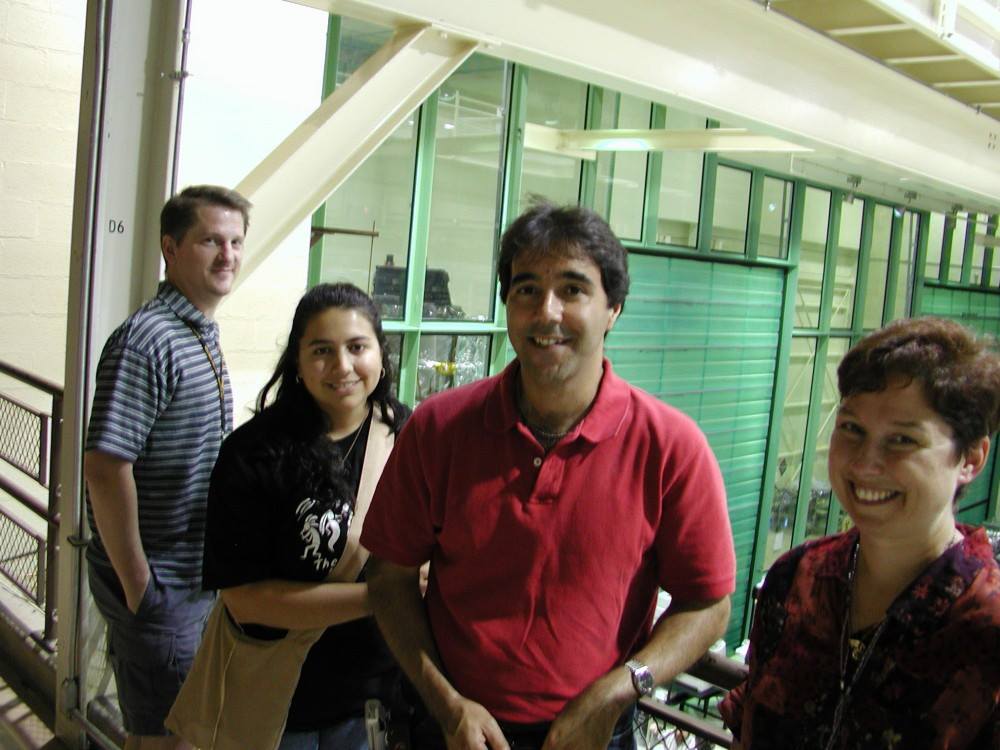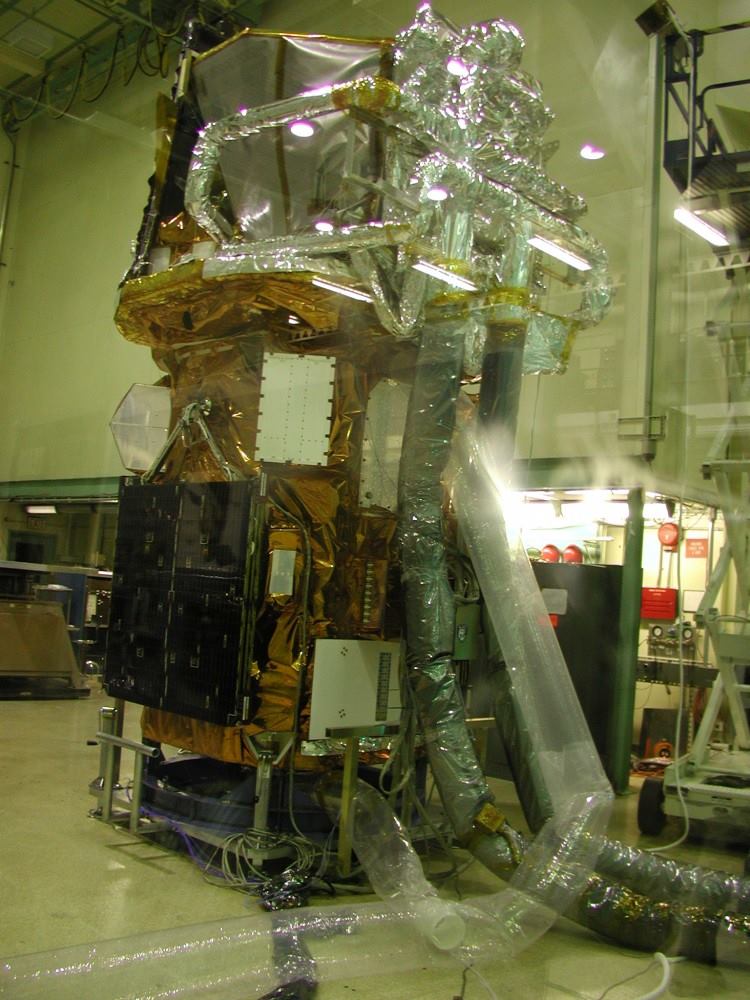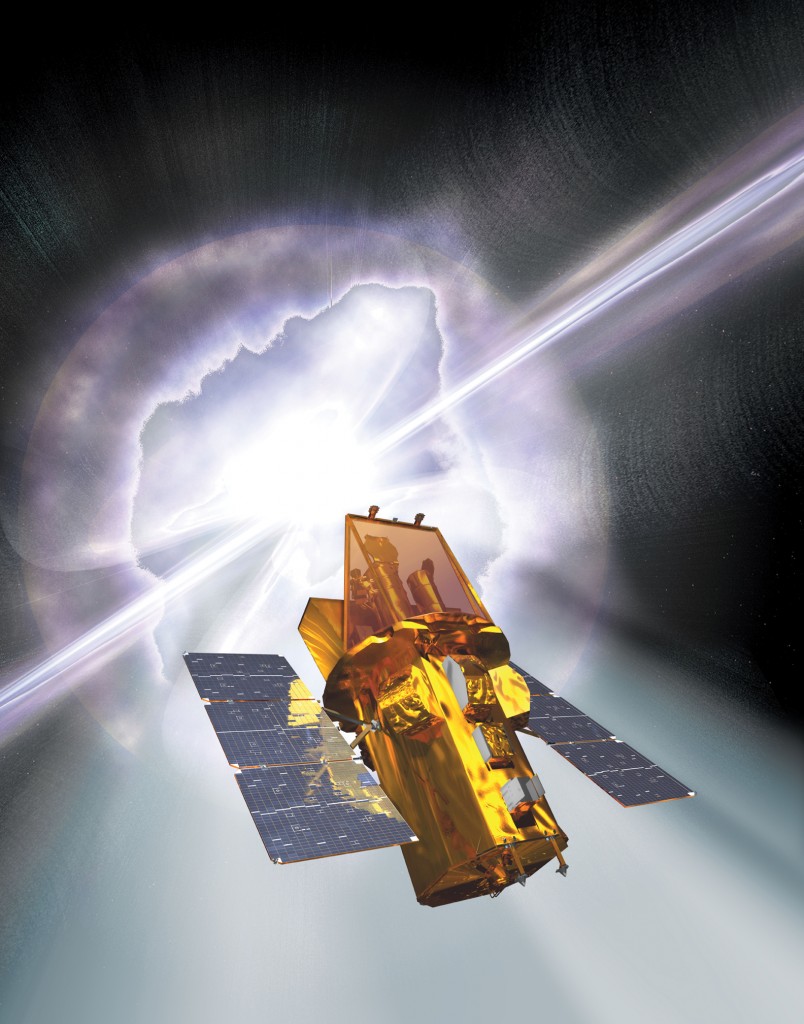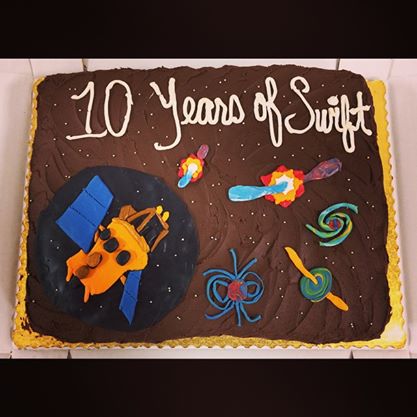Happy Birthday, Swift!
- By Maggie Masetti
- December 9, 2014
- Comments Off on Happy Birthday, Swift!
This is our third Happy Birthday post for a satellite in the last year or so – which is pretty cool actually, to have satellites that are hitting significant milestones and have had the longevity to still be doing great science. We had Fermi’s 5th birthday in August 2013, followed by Spitzer’s 10th in September 2013.
And then we just recently hit Swift’s 10th birthday. What is Swift? Swift is an observatory that has been dedicated to studying gamma-ray bursts (GRBs) – and it can study GRBs and their afterglows at gamma ray, X-ray, ultraviolet, and optical wavelengths.
GRBs are short-lived bursts of gamma-ray light, which can last from few milliseconds to several minutes, and shine hundreds of times brighter than a typical supernova and about a million trillion times as bright as our Sun. Furthermore, when a GRB erupts, it is briefly the brightest source of cosmic gamma ray photons in the observable Universe. (Thanks to Imagine the Universe!, more info there.) What exactly was causing these incredibly energetic bursts was a big mystery. Enter Swift. Data from Swift (and also the gamma-ray Fermi observatory) have given us valuable clues that are helping us solve this mystery. (We got the scoop on the latest in the interview you’ll see below.
We actually built Swift here at NASA Goddard. I was fortunate enough to get the chance to see the satellite before it launched. They displayed it in its cleanroom. Here is me 10 years ago with Brendan, Steve, and Meredith. (Meredith and Steve have been a huge help to Blueshift behind the scenes on the server side of things.)


Sara and I talked to the Principal Investigator for the Swift mission, Neil Gehrels, to ask him 10 questions about Swift for its 10th Anniversary.
Blueshift: What is your role with Swift? How long have you been involved with the project?
Neil Gehrels: I am the lead scientist of Swift. In NASA jargon, my role is Principal Investigator. My involvement started at the very beginning in 1996 when Nick White and I conceived of the mission.
Blueshift: How did Swift come to be?
Neil Gehrels: NASA has competitions every other year for small to medium sized missions. Typically 40 teams put in proposals and one is chosen to fly through a rigorous and grueling peer review process. We proposed Swift in 1998 and were fortunate enough to have it selected. The observatory was constructed from 1999 to 2004 and then launched.
Blueshift: Were you at the launch? What was it like to watch Swift head into space?
Neil Gehrels: Yes, I was in the control center at the launch. It was one of the most exciting days of my life. Exhilaration mixed with fear of failure! Luckily everything went perfectly.
Blueshift: Why gamma rays? What are they, and what do they tell us about the Universe?
Neil Gehrels: Gamma rays are like really powerful X-rays. Just like the X-rays at the dentist office, they are very penetrating rays of light. The are produced in the hottest, most explosive events in the universe. We use them to study the death of stars and birth of black holes.
Blueshift: What’s Swift’s role within the international fleet of astrophysics satellites?
Neil Gehrels: Swift is the NASA’s premier satellite for observing the most explosive and dynamic sources in the universe. Objects such as gamma-ray bursts and supernovae. The observatory detects the transient sources and then repoints itself, without human intervention, at the source for detailed observations with the on-board telescopes
Blueshift: What research have you personally done with Swift?
Neil Gehrels: My personal research is studying gamma-ray bursts. Whenever one is detected by Swift, which occurs about twice per week, I receive a text message on my phone and run to the nearest computer to look at the new data.
Blueshift: Did you expect to still be doing amazing science with Swift ten years later?
Neil Gehrels: Swift was built to operate for 2 years, but hoped it would go much longer. It is such a joy to have it still working perfectly after ten years.
Blueshift: Has Swift helped provide answers to major astronomical mysteries such as the cause of gamma-ray bursts?
Neil Gehrels: Yes, Swift has made major discoveries every year. We found out that long and short gamma-ray bursts have very different origins. Long bursts are from exploding stars and short bursts are from the collision of compact neutron stars. Another big finding was the detection of 2 gamma-ray bursts from the very distant edges of the universe. They were produced in the explosions of very early stars.
Blueshift: What do you think are the top discoveries made by Swift over the last decade?
Neil Gehrels: In addition to the major discoveries about gamma-ray bursts, another biggie was detecting a the shredding of a star by a massive black hole. The star drifted too close to the black hole and was torn apart by the strong gravity of the black hole. Another fun discovery was a flash of X-rays from a new supernova explosion. We were lucky to be looking in the direction of a new supernova at the time the star first collapsed and discovered a brilliant pulse of X-rays. It was the long-predict “shock break-out” where a wave of heat zooms through the star at the moment of collapse and bursts out of the surface.
Blueshift: What’s next for Swift?
Neil Gehrels: Hopefully Swift will last another 10 years. We are using it in a new way lately, as a resource for astronomers. Our colleagues send an alert to us when they find something interesting going on in the universe and we point Swift at it.
Blueshift:Thanks!
And happy birthday to Swift, we hope you have many more!
We’ll leave you with this video of Neil Gehrels talking more about Swift in this video about its decade of game-changing astrophysics.




